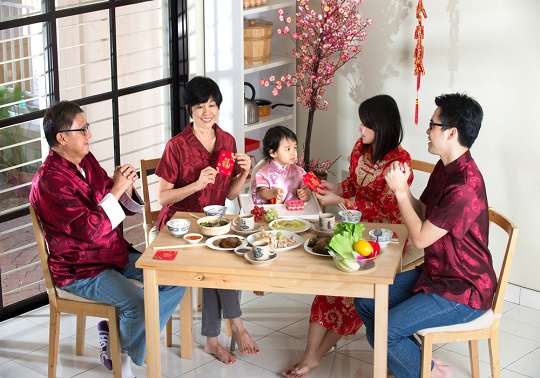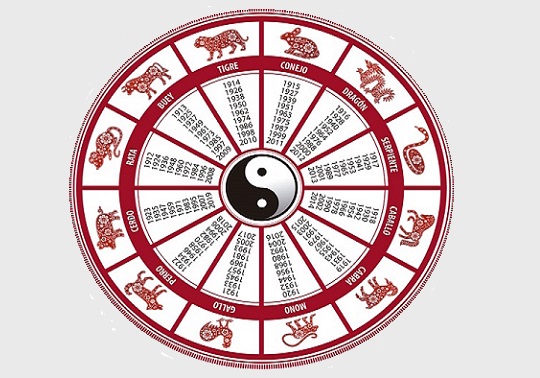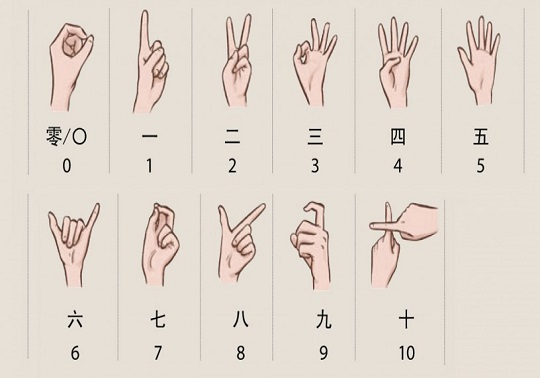We revise the Chinese radical of sun (日, rì) according to the principles Xu Shen (30-124 AD) established at the etymological dictionary Shuōwén jiězì.
8 november 2016

The radical 日 (rì) in its original form was the representation of the sun. Currently, when this character appears as a component of other character it means it is someway related to the sun. In its original form, the radical of the sun (日) follows the pictographic principle of formation (象形, xiàngxíng). Following, we will see some examples such as: 晶 (jīng), 星 (xīng), 晕 (yūn), 旦 (dàn), 昔 (xī), 早 (zǎo), 昏 (hūn), 明 (míng) y 是 (shì).
Note: We speak in depth of the formation principles of Chinese characters according to the Shuōwén jiězì’ (说文解字) in the reportage “The ‘Shuowen Jiezi’ and the Chinese characters”. We remind that Xu Shen (许慎, 30-124 AD) divided the formation of Chinese characters in six principles. Nowadays, at least half the current simplified characters can be analysed and read according to some of this six principles.
Illustrations by Xavier Sepúlveda
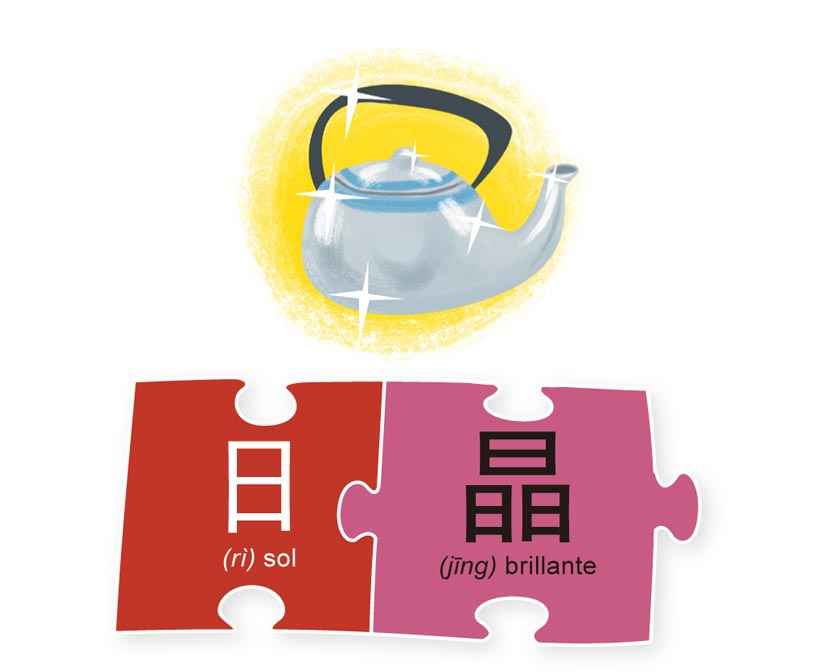
A) The character 晶 (jīng), which means “shiny”, “glossy”, “gleaming”, is formed by 12 strokes and the radical of sun (日). Nevertheless, in its original form, this character represented a great number of stars and, precisely, due to their luminosity, it has evolved to the meaning “luminous, shiny” (光亮, guāngliàng). The formation method it follows is the compound indicative (会意, huìyì), that consists of the combination of two or more pictograms that associate ideas.
相关词语 / Related words:
- 晶光 (xīngguāng)
- 晶亮 (jīngliàng)

B) The character 星 (xīng) means “star” and follows the phono-semantic principle of formation (形声, xíngshēng), which creates ideophonograms. In its original form (曐) it can be seen the upper part 晶 provides the semantic part, while the bottom (生, shēng) adds the phonetic. The character of star (星) is formed by nine strokes and can also mean “planet” or “any light point”.
C) The character 生 (shēng) means “life, to live, birth”. In its origins it represented a plant (屮) emerging from ground (土) and therefore it followed the compound indicative principle of formation (会意).

D) The original form of the character 晕 (yūn) was “暈” and it is built following the phono-semantic principle of formation (形声, xíngshēng), therefore the radical of sun (日) provides the semantic part while 军 (jūn, “army, soldiers, troops”) adds the phonetic part. Nevertheless, it also follows the compound indicative principle (会意, huìyì), so both pictograms associate ideas. Its original form draws a beam of light that comes from the sun (日), which shines crossing the clouds (冖) lighting up the chariots 車 (chē). Yūn is formed by ten strokes and means “Sun’s halo”, “fog” o “dizzy”, “confused”. Its original meaning represented clouds as chariots of war that surround the sun.

E) The character 军 (jūn) was originally formed by a chariot (車), that would be the semantic element of the character, and the radical of roof (冖). In the original form, this character was surrounded by a sort of circle that symbolised the protection in the chariot. It was formed according to the principle of the compound indicative (会意, huìyì), since the upper part was compound by the radical of man, which evolver by mistake to the radical of roof (冖). The legend says that it was the Yellow Emperor (黃帝, Huángdì) who invented these chariots, but this discovery is also attributed to the prime minister of the Xia dynasty (夏朝, 2070-1600 BC): Xi Zhong (奚仲). Then, they were used for battles (zhànchē, chariot of war), more than as vehicles for transportation. Because of this, the character “车” (chē, car) appears as a component in other characters, indicating some association to vehicles.
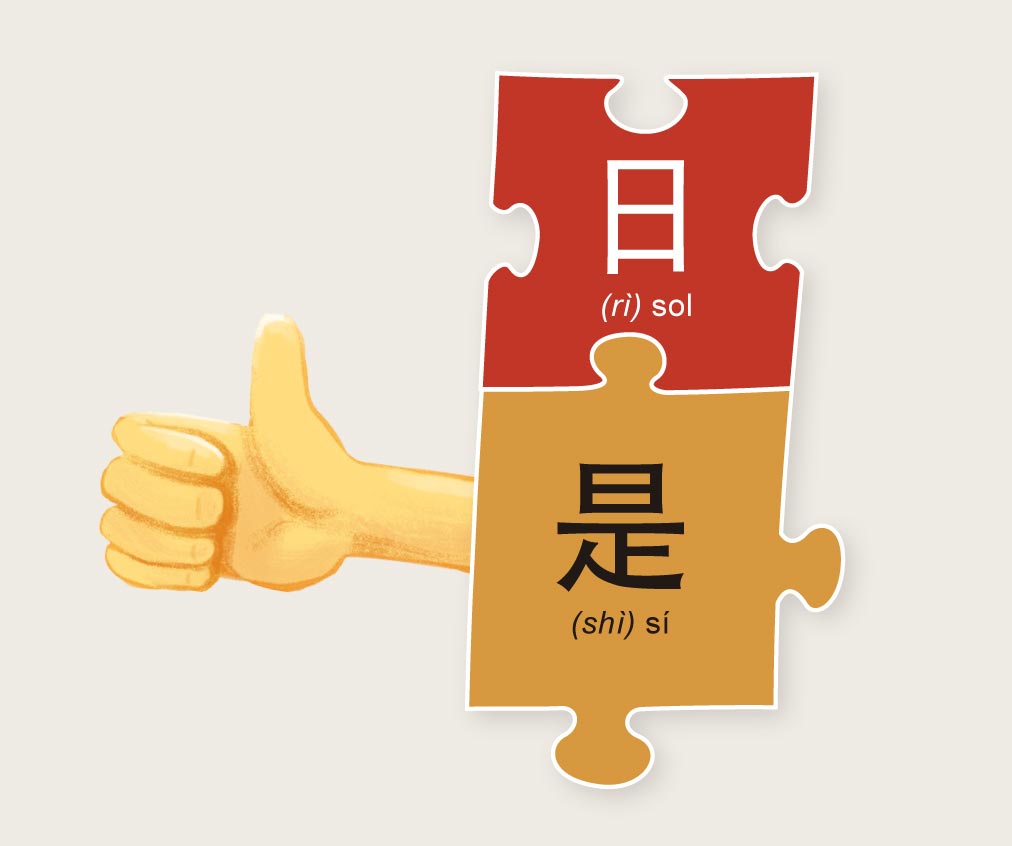
F) The character 是 (shì) means, among other things, “yes”, “right”, “to be”, “indeed”. Its original form followed the compound indicative principle of formation (会意). The radical 止 (zhǐ) was added to it under the character of “morning” (早, zǎo), indicating the search for light and changing its meaning to “right”. Over time, the character of “morning” (早) was replaced by the character of sun (日). According to the Shuowen Jiezi, the character 是 is formed with the compound of these two radicals (日 + 正).
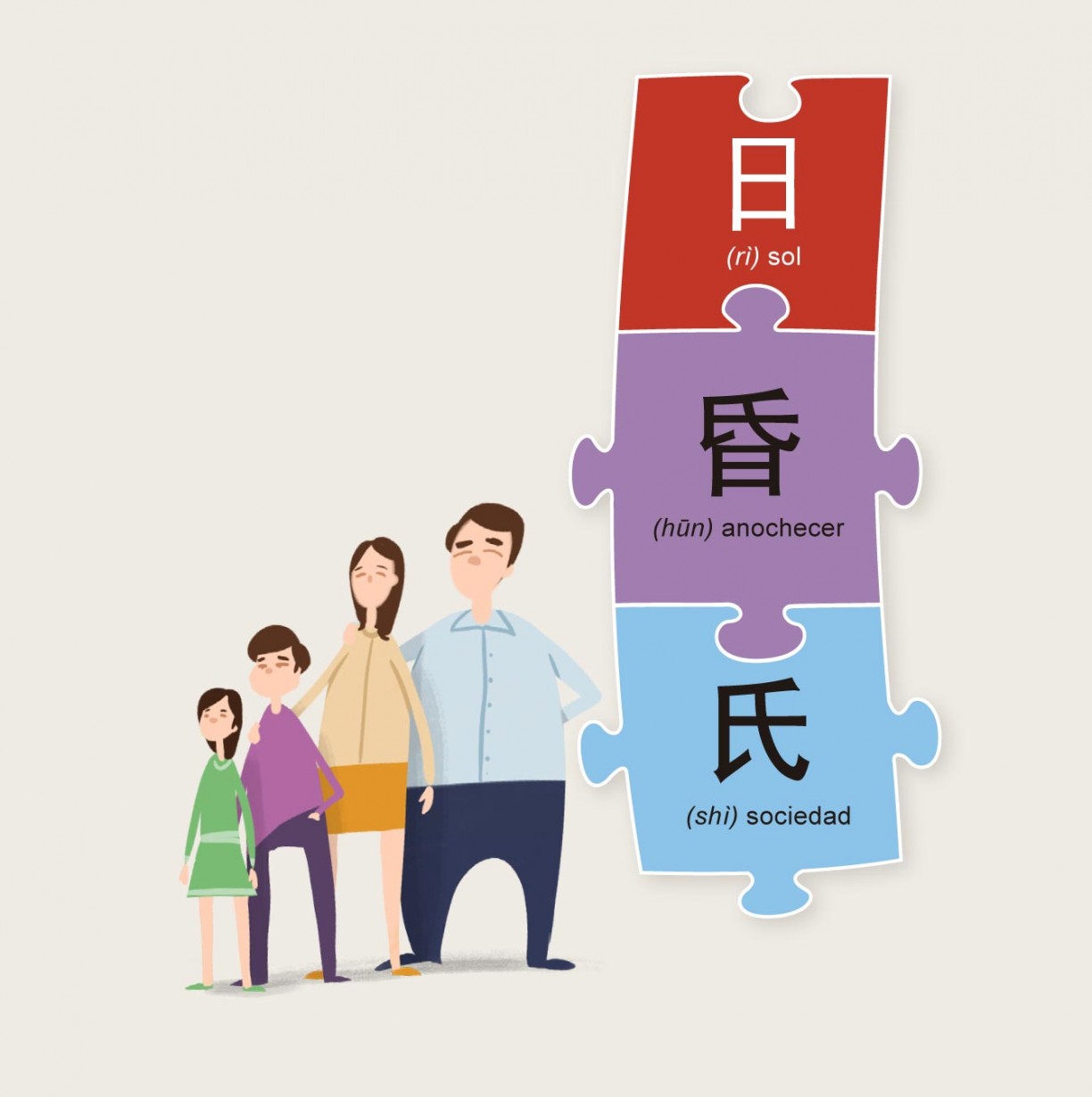
G) The character 昏 (hūn) currently means “dusk”, “dark”, “confused”, “lose consciousness” and it is formed with 8 strokes. In its origins, this character followed the compound indicative principle of formation (会意), which represented the sun (日) at dusk, placing it under the people (氏). According to the legend, it was related to weddings 结婚 (jiéhūn), which were celebrated at sundown.
H) In the ancient times, the radical 氏 (shì) meant “society”, “family”, “clan” and it was formed following the pictographic principle (象形), since it represented a clan in a totem. This radical is formed with 4 strokes.
相关词语 / Related words:
- 氏社会 (shìshèhuì, patriarchal society)
- 氏族 (shìzú, clan)
Report by Clara Serer Martínez
克莱拉


